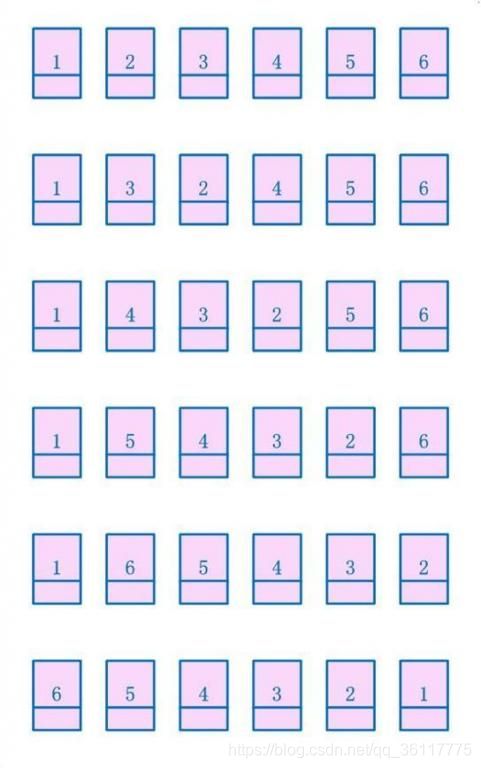Python面试——剑指offer&leedcode刷题整理(链表)
1、相交链表
leetcode 160题
注意:
如果两个链表没有交点,返回 null.
在返回结果后,两个链表仍须保持原有的结构。
可假定整个链表结构中没有循环。
程序尽量满足 O(n) 时间复杂度,且仅用 O(1) 内存。
class Solution(object):
def getIntersectionNode(self, headA, headB):
"""
:type head1, head1: ListNode
:rtype: ListNode
"""
if not headA or not headB:
return None
pa = headA
pb = headB
while pa is not pb:
#若无交点,则在none处相遇,退出循环
if pa == None:
pa = headB
else:
pa.next
if pb == None:
pb = headA
else:
pb.next
return pa
2、环形链表
leetcode 141题
给定一个链表,判断链表中是否有环。
为了表示给定链表中的环,我们使用整数 pos 来表示链表尾连接到链表中的位置(索引从 0 开始)。 如果 pos 是 -1,则在该链表中没有环。
示例 1:
输入:head = [3,2,0,-4], pos = 1
输出:true
解释:链表中有一个环,其尾部连接到第二个节点。
示例 2:
输入:head = [1,2], pos = 0
输出:true
解释:链表中有一个环,其尾部连接到第一个节点。
示例 3:
输入:head = [1], pos = -1
输出:false
解释:链表中没有环。
解法
判断链表中是否是有环,采用追赶法的思路,设置一个walker,每次走一步,设置一个runner,每次跑两步,当runner追上walkder时,说明链表中有环存在。
# Definition for singly-linked list.
# class ListNode(object):
# def __init__(self, x):
# self.val = x
# self.next = None
class Solution(object):
def hasCycle(self, head):
"""
:type head: ListNode
:rtype: bool
"""
fast = slow = head
while fast and slow and fast.next:
slow = slow.next
fast = fast.next.next
if slow is fast:
return True
return False
3、合并两个有序链表
leetcode 21
将两个有序链表合并为一个新的有序链表并返回。新链表是通过拼接给定的两个链表的所有节点组成的。
示例:
输入:1->2->4, 1->3->4
输出:1->1->2->3->4->4
解法
很简单的链表拼接题,但是要注意两个地方
1、返回值要返回head.next
2、无需判断循环后哪个不为空,or返回第一个为真的值
# Definition for singly-linked list.
# class ListNode:
# def __init__(self, x):
# self.val = x
# self.next = None
class Solution:
def mergeTwoLists(self, l1, l2):
"""
:type l1: ListNode
:type l2: ListNode
:rtype: ListNode
"""
head = ListNode(0) #创建一个新的头节点
current_node = head #新链表的当前节点
while l1 != None and l2 != None: #l1和l2 存在
if l1.val > l2.val: #l1值大于l2,将l2值插进来,遍历l2
head.next = l2
l2 = l2.next
else :
head.next = l1
l1 = l1.next
head = head.next #一次比较后,继续遍历
if l1 == None:
head.next = l2
elif l2 == None:
head.next = l1
return current_node.next4、删除链表中的重复元素
leetcode 83题
给定一个排序链表,删除所有重复的元素,使得每个元素只出现一次。
示例 1:
输入: 1->1->2
输出: 1->2
示例 2:
输入: 1->1->2->3->3
输出: 1->2->3
# Definition for singly-linked list.
# class ListNode:
# def __init__(self, x):
# self.val = x
# self.next = None
class Solution:
def deleteDuplicates(self, head: ListNode) -> ListNode:
if not head:
return head
p = head
q = head.next
while q:
if p.val == q.val:
p.next = q.next
q = q.next
else:
p = p.next
q = q.next
return head
法二:
# Definition for singly-linked list.
# class ListNode:
# def __init__(self, x):
# self.val = x
# self.next = None
class Solution:
def deleteDuplicates(self, head: ListNode) -> ListNode:
cur = head
while cur:
while cur.next and cur.val == cur.next.val:
cur.next = cur.next.next
cur = cur.next
return head
5、移出链表元素
leetcode 203
删除链表中等于给定值 val 的所有节点。
示例:
输入: 1->2->6->3->4->5->6, val = 6
输出: 1->2->3->4->5
解法
"有了第83题的思路,我们这里可以用一个指针来进行链表的遍历,但是这里需要注意的是,头节点也需要进行判断,如果头节点的值等于val的话,我们不能返回头节点,所以这里很巧妙的重新生成了一个无关的头节点。
class Solution(object):
def removeElements(self, head, val):
"""
:type head: ListNode
:type val: int
:rtype: ListNode
"""
dummy = ListNode(-1)
dummy.next = head
cur = dummy
while cur:
while cur.next and cur.next.val == val:
cur.next = cur.next.next
cur = cur.next
return dummy.next
6、翻转链表
leetcode 206
反转一个单链表。
示例:
输入: 1->2->3->4->5->NULL
输出: 5->4->3->2->1->NULL
解法
链表转置,这里实在想不到一个指针的解法了,只能用两个指针,再加上head的帮忙,p指针记录的是每次的队头元素,q指针指向下一个要插入队头的元素。
可参考:https://blog.csdn.net/feliciafay/article/details/6841115
方法一:
# Definition for singly-linked list.
# class ListNode(object):
# def __init__(self, x):
# self.val = x
# self.next = None
class Solution(object):
def reverseList(self, head):
"""
:type head: ListNode
:rtype: ListNode
"""
if head == None:
return None
p = head
q = head.next
head.next = None
while q:
r = q.next
q.next = p
p = q
q = r
head = p
return head
方法二:
# Definition for singly-linked list.
# class ListNode(object):
# def __init__(self, x):
# self.val = x
# self.next = None
class Solution(object):
def reverseList(self, head):
"""
:type head: ListNode
:rtype: ListNode
"""
if head == None:
return None
if head.next == None:
return head
p = head.next
while p.next != None:
q = p.next
p.next = q.next
q.next = head.next
head.next = q
p.next = head
head = p.next.next
p.next.next = None
return head
